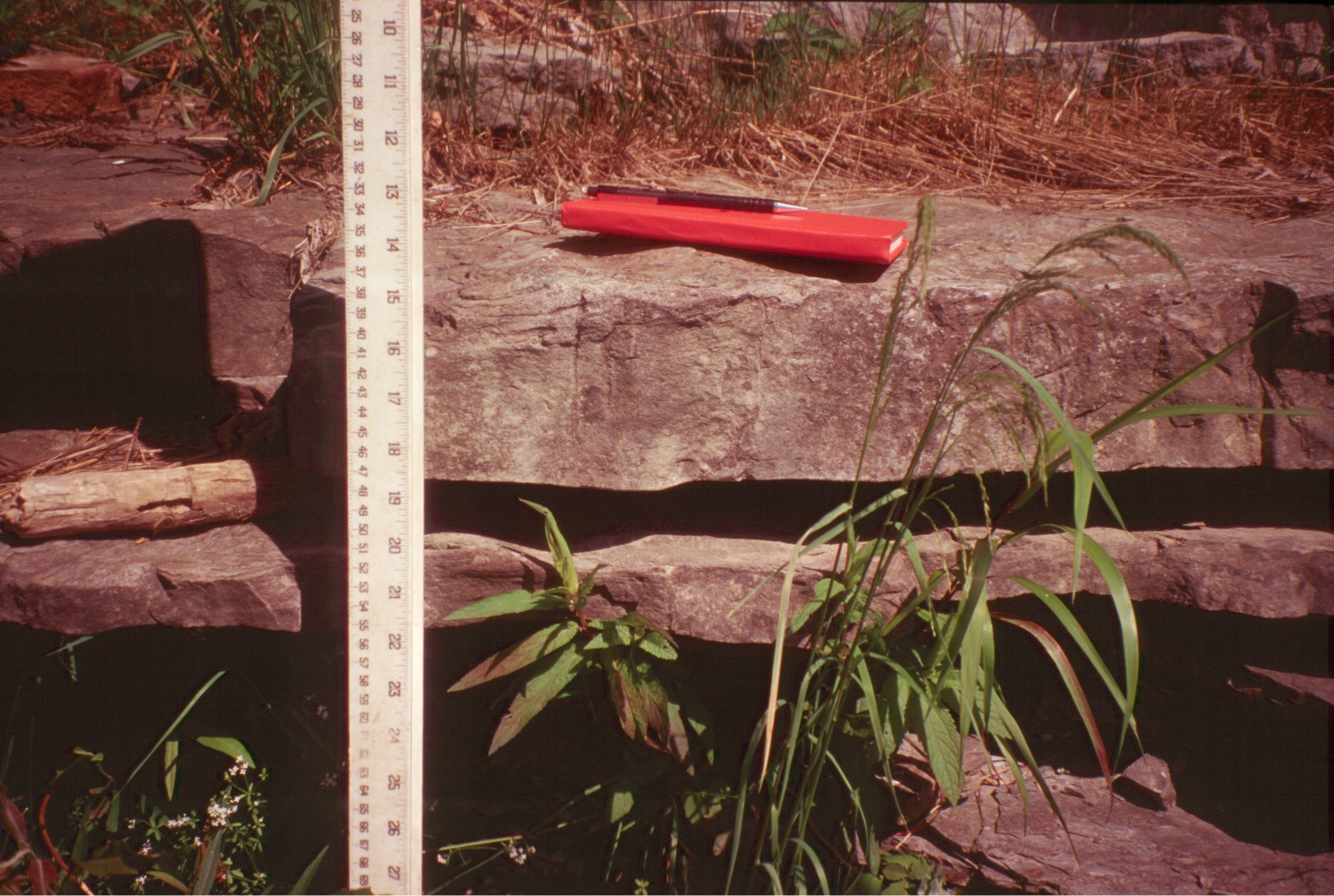
Wiscoy Falls, type section of the Wiscoy Fm. as defined by Clarke (1898).

Skolithos and Arenicolites trace fossils are common at the type locality of the Wiscoy Fm., indicating that
the deposition environment possessed high energy.
Wiscoy Formation (Clarke, 1898):
Type Locality: Wiscoy Falls, Wiscoy, NY
Equivalent Names:
none
Thickness: 29.4 m (~96.4 ft.)
Lithology: The Wiscoy Formation is characterized by an interbedded assemblage of calcareous/dolomitic siltstones, calcareous fine-grained sandstones and gray shales with thin limestones. Outcrops are comprised predominantly of calcareous siltstones that weather massively. The appearance of the formation is a distinctive grayish-purple color that weathers a buff to brown-gray color. The top 7.5 meters of the formation consists of interbedded gray shales and calcareous siltstones and a persistent, thick (10 to 30 cm) black shale bed. The black shale is a possible precursor to the Dunkirk Formation or may indicate a shallower, organic-rich lagoon environment. Basal and upper contacts are both sharp.
Ichnology: Calcareous sandstones contain predominantly Skolithos ichnofacies, including Arenicolites and Skolithos vertical burrows. Abundant Teichichnus and Planolites burrows occur on upper bedding surfaces, and may represent an Arenicolites-Teichichnus assemblage in the finer sequences.
Depositional Environment: The calcareous siltstones and sandstones are interpreted to be deposited near or above fair weather wave base in the lower shoreface environment or possible lagoon/ bay environment. These depositional environments were inferred from the predominance of Skolithos ichnofacies found within the sandstones, as well as from the abundance of wood and coalified plant fragments found between bedding planes and the lack of preserved hummocky cross stratification (HCS). The Arenicolites-Teichichnus assemblage may indicate lagoon or bay facies for some of the interbedded shales, siltstones and thin sandstones. The uppermost-interbedded section may represent a deepening of sealevel, and/or restriction of oxygen and currents.
Wiscoy Formation


Skolithos and Arenicolites trace fossils are common at the type locality of the Wiscoy Fm., indicating that
the deposition environment possessed high energy.